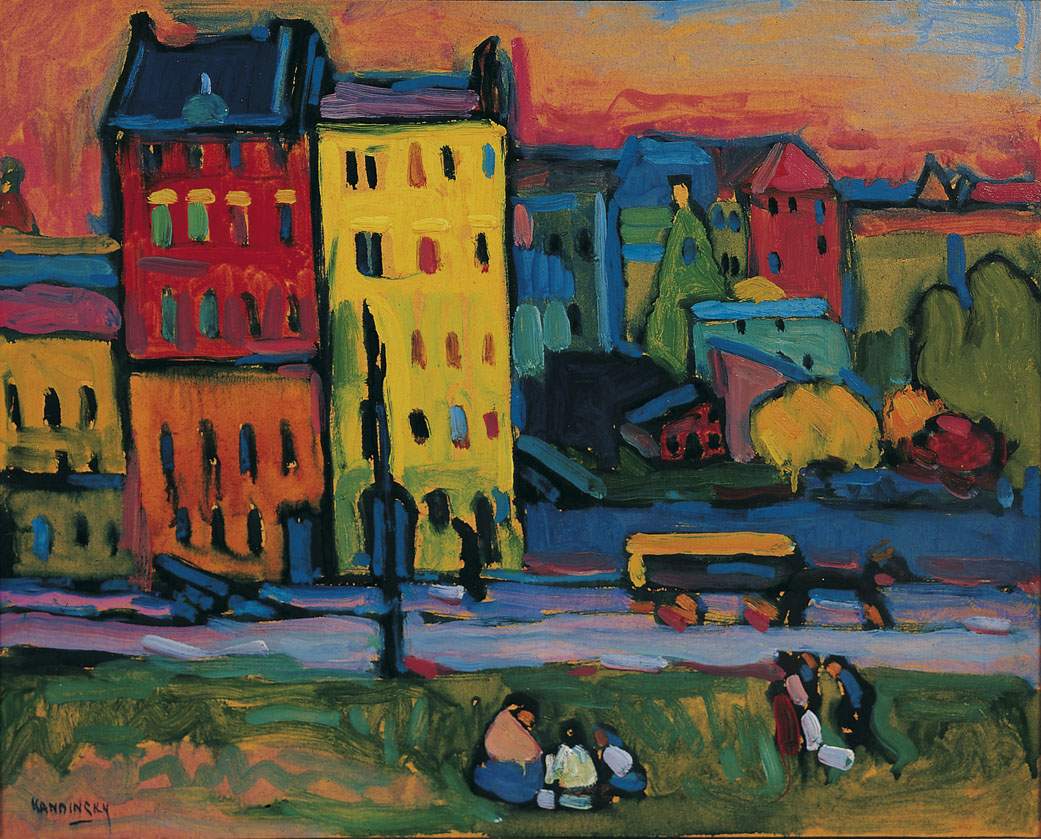From Kandinsky to Kokoschka, German avant-gardes on display in Parma
From November 10, 2018 to February 24, 2019, the Palazzo del Governatore in Parma is hosting the exhibition From Expressionism to New Objectivity. Vanguards in Germany, which brings together forty works by the most important representatives of the early 20th century avant-garde in the German area, from Ernest Ludwig Kirchner to Emil Nolde, Alexei Jawlensky to August Macke, Vasily Kandinsky to Franz Marc. The exhibition, curated by Lorand Hegyi and Gerhard Finckh, has been built with works from the Von der Heydt Museum in Wuppertal, which houses one of the most important collections devoted to German Expressionism, Neue Sachlichkeit (the New Objectivity) and all of the German avant-garde.
The exhibition is divided into two sections. The first focuses on German Expressionism, presenting paradigmatic works mostly from the circle of artist groups of the Die Brücke (The Bridge) in Dresden, such as Ernst Ludwig Kirchner, Erich Heckel, Otto Mueller, Emil Nolde, Karl Schmidt-Rottluf, and Max Pechstein, and from the Der Blaue Reiter (The Blue Rider) movement in Munich, including Vasily Kandinsky, Franz Marc, Alexei Jawlensky, and August Mackedi Der Sturm. The second offers insight into the aesthetic changes in the years after World War I, when artists such as Karl Hofer, Eberhard Viegener, Otto Dix, Max Ernst, Jankel Adler, representatives of the New Objectivity (Neue Sachlichkeit) created, under the influence of the new Rationalism and Functionalism, “Metaphysical Painting” and Neo-Classicism of the so-called “Return toorder” developed in Italy, a new artistic atmosphere that reflected the disillusionment of the generation that had experienced the war and the consequent loss of life, the destruction of European cities, and the takeover of machines both during the war years and in the early 1920s, that is, in the era of modernization and rationalization of production, life, and society.
“The exhibition,” comments Lorand Hegyi, “thanks to the generous and highly professional collaboration with the Director of the Von Der Heydt Museum, Gerhard Finckh, and his colleagues, offers an in-depth look at such an important artistic movement, which more than 100 years after its birth still retains an aesthetic and ethical message that is extremely direct and essential through an empathetic language that effectively conveys touching, dramatic and spiritual messages.” In the visual arts, film and music, literature and theater, philosophy and political theory, Expressionism became, shortly after its birth in the pages of magazines and books, in exhibition halls and concert halls, synonymous with “Modernity,” the embodiment of the new spirit of the new century.
The new art manifested a counterpoint to real life and fostered the free expression of the inner world of emotions, imagination and spiritual intensity. Influenced by Friedrich Nietzsche, Henri Bergson, Walt Whitman, and Rudolf Steiner, young artists approached anthropology, anthroposophy, theosophy, and even Romanticism, revisiting medieval art as well as African art and folk themes. One after another, groups of artists and art galleries, cultural and political journals were formed that proclaimed the need for a New Spirituality, based on the power of immediate expression of the inner forces and energies that shake humanity. In 1905 the group Die Brücke was founded in Dresden by four young German artists who quickly organized several exhibitions of their new pictorial activity.
Three years later, in 1907, the young art historian Wilhelm Worringer published “Abstraction and Empathy,” in which he interpreted abstract forms as a manifestation of a spiritual world alternative to the material world of nature. Worringer’s book influenced the entire generation of expressionism. Shortly thereafter, in 1911, Kandinsky and Franz Marc founded the Expressionism artist group “Der Blaue Reiter,” which brought together many international artists of the new movement. A year later, in 1912, Vasily Kandinsky, one of the fathers of Abstractionism, published his famous and influential book The Spiritual in Art in which he spoke of “inner necessity” as the driving force behind artistic creativity. In the same year the poet, writer and publisher Herwarth Walden opened his gallery Der Sturm in Berlin, which also became the most important center of Expressionism as well as Futurism and Cubism. Through the gallery’s activities German Expressionism became part of the international Vanguards and played a very influential role in both art and theory. The presence of leading international artists in his gallery also manifested the complexity of the avant-gardes, such as the different perspectives and social and political strategies with which the various movements were connected.
The exhibition opens every day except Monday: Tuesdays and Wednesdays from 3 to 7 p.m., Thursdays through Sundays and holidays from 10 a.m. to 7 p.m. Closed Dec. 25 and Jan. 1. Tickets: full 10 euros, reduced 6 euros, reduced schools 4 euros. Catalog published by Spaggiari.
Image: Vasily Kandinsky, Houses in Munich (1908; oil on canvas; © Von der Heydt-Museum Wuppertal / Photo: Antje Zeis-Loi, Medienzentrum Wuppertal)
 |
| From Kandinsky to Kokoschka, German avant-gardes on display in Parma |
Warning: the translation into English of the original Italian article was created using automatic tools. We undertake to review all articles, but we do not guarantee the total absence of inaccuracies in the translation due to the program. You can find the original by clicking on the ITA button. If you find any mistake,please contact us.



























